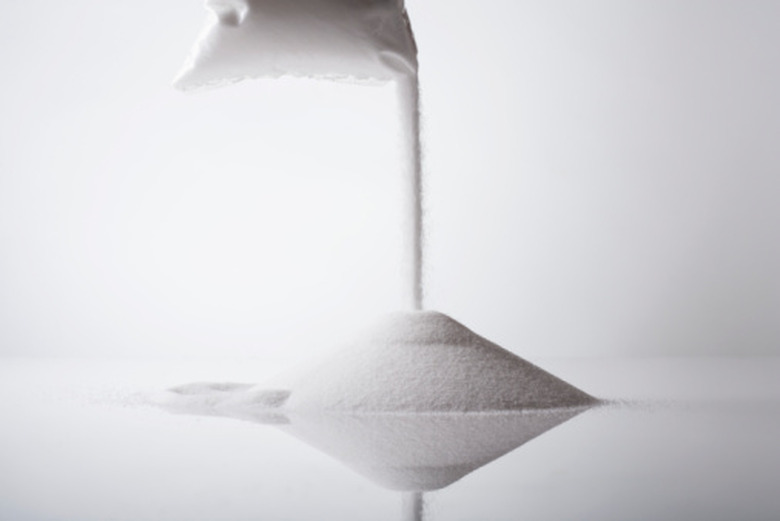How To Make A 5% NaCl Solution
A "weight percent" represents one of the more common units chemists use to express the concentration of a solution. Mathematically, chemists calculate mass percent by (weight of solid) / (weight of solid and liquid) x 100. A solution that contains five percent salt, or NaCl, contains five ounces of NaCl per 100 ounces of total solution, where "total solution" refers to the combined weight of the NaCl and water together.
Step 1
Weight out about 199 grams, or seven ounces, of table salt and transfer the salt into an empty gallon container. If you do not own a scale or balance, you can approximate this measurement by using 10.5 level tablespoons of salt because one tablespoon of salt weighs about one ounce and 7.0 ounces x 1.5 tablespoons = 10.5 tablespoons. A balance, however, provides a more accurate measurement of weight.
Step 2
Open a gallon container of distilled water and add the salt directly to the container. Cap the container and, with your hand holding the cap securely in place, invert the container to mix the contents. Continue inverting the container until no solid NaCl crystals can be seen on the bottom of the container.
Step 3
Peel the original label from the container and label the bottle "5% NaCl" with a permanent marker.
Things Needed
- Balance capable of measuring to 1 gram or 0.1 ounce
- Table salt
- 1 gallon of distilled water
- Permanent marker
TL;DR (Too Long; Didn't Read)
The concentration of the NaCl can be calculated as follows: A gallon of water weighs 8.34 pounds, or 133 ounces. The salt and water together weigh 133 + 7 = 140 ounces. The percent NaCl by mass is therefore (7.0 / 140) x 100 = 5.0 percent NaCl.
Cite This Article
MLA
Brubaker, Jack. "How To Make A 5% NaCl Solution" sciencing.com, https://www.sciencing.com/make-nacl-solution-8242471/. 24 April 2017.
APA
Brubaker, Jack. (2017, April 24). How To Make A 5% NaCl Solution. sciencing.com. Retrieved from https://www.sciencing.com/make-nacl-solution-8242471/
Chicago
Brubaker, Jack. How To Make A 5% NaCl Solution last modified August 30, 2022. https://www.sciencing.com/make-nacl-solution-8242471/
